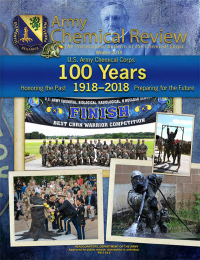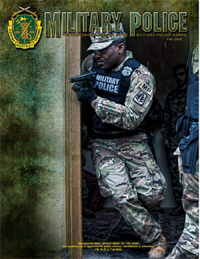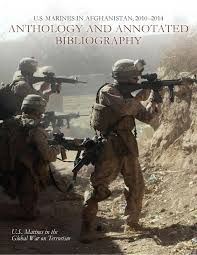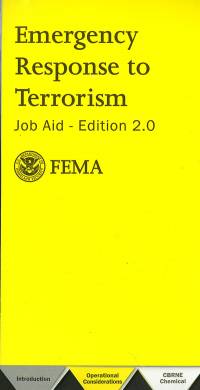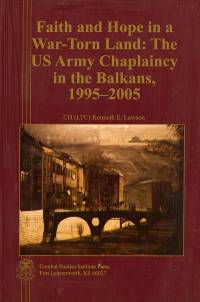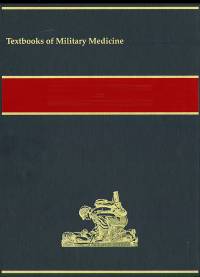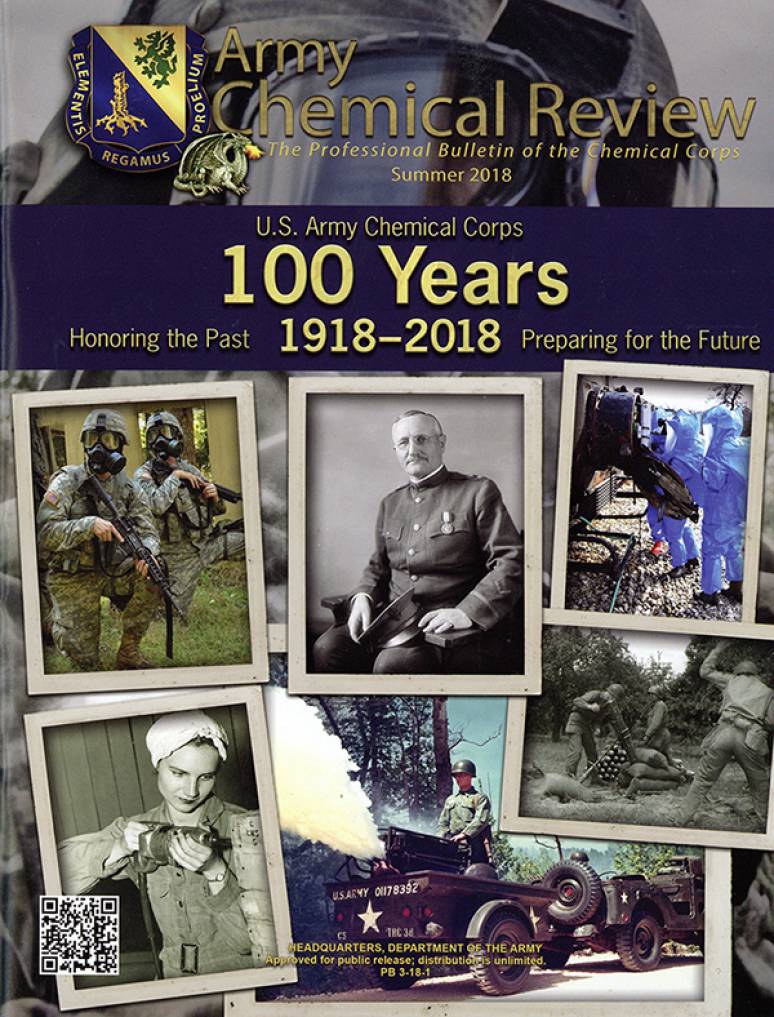
Celebrating the 100th anniversary of the U.S. Army Chemical Corps has provided many opportunities to reflect on our proud history. Founded on the battlefields of France during World War I, the U.S. Army Chemical Corps has served with distinction in every conflict since its inception.
The ACR highlights unique Army chemical, biological, radiological, and nuclear technical-response capabilities for supporting national countering weapons of mass destruction operations and conducting all-hazmat mitigation across the range of military operations anytime, anywhere. The objectives of ACR are to inform, motivate, increase knowledge, improve performance, and provide a forum for the exchange of ideas. This publication presents professional information; but the views expressed herein are those of the authors, not the Department of Defense or its elements. The content does not necessarily reflect the official U.S. Army position and does not change or supersede any information in other U.S. Army publications. Army Chemical Review is published biannually in June and December by the U.S. Army Chemical, Biological, Radiological, and Nuclear School (USACBRNS), Fort Leonard Wood, Missouri.
2 Chief of Chemical and Commandant, U.S. Army Chemical, Biological, Radiological, and Nuclear School
4 Chemical Corps Command Sergeant Major
5 Chemical Corps Chief Warrant Officer
7 CBRN Interoperability Between the United States and Poland By First Lieutenant Micayla J. Westendorf and Staff Sergeant Jack D. Johnson
11 Photograph and Illustration Guide 12 84th Chemical Battalion: CBRN OTD Training and Integration Initiatives By Lieutenant Colonel Byron G. Galbraith and Major Matthew C. Mason
15 Enabling the Warfighter: 9th CBRNE Company Supports 1-2 SBCT CALFEX By Captain Michael T. Lindsay and First Sergeant Tecarlos Y. Williams
19 Winning in an Uncertain Environment: Integrated Early Warning By Mr. Larry Lazo, Mr. Joseph Baker, and Major Yulang Tsou
21 Optimizing the Army CBRNE Force Structure By Major Alexi D. Franklin
23 CBRN Integration Into Forward Support Operations By Captain Keith J. Johnson and First Lieutenant Robert J. Park
25 USMA Department of Chemistry and Life Science— Reaction Center for Army Chemical Intellectual Capital By Colonel F. John Burpo, Lieutenant Colonel Richard L. Comitz, and Major Stephen G. Hummel
30 Our Path to the 2017 Best Ranger Competition By Major Timothy D. Cox and First Lieutenant Andy H. Harvey
33 Preparing for Mission Command of DCRF Operations By Colonel John C. Becking
35 Smith Sworn in as New Army Inspector General, Promoted to Lieutenant General By Mr. Dustin Perry
36 773d CST as an ICBRN-R Capability Within the U.S. European Command Area of Responsibility By Colonel U. L. Armstrong Jr. and Captain Dino P. de la Hoya
38 Defining the CBRNE Problem By Major Alexi D. Franklin
41 Developing and Testing the Decontamination Effluent Treatment System By Dr. Victor F. Medina, Mr. Scott A. Waisner, Dr. Edith Martinez-Guerra, and Mr. Jared L. Johnson
46 Countering Weapons of Mass Destruction: An Army Warfighting Challenge By Major Yulang Tsou 47 Exploiting a CBRN Environment By Major John N. Waugh and Mr. Larry Lazo 49 Army Chemical Review Writer’s Guide
50 231st Conducts Mass Decontamination Exercise in the Port of Baltimore By Second Lieutenant Alex E. Belval
51 Talent Management: Our Collective Responsibility By Major Nicolas P. Bell
53 Doctrine Update: FM 3-11 By Major Randall J. Adams and Captain Francisco Rincon Jr.
55 Doctrine Update
58 Reserve Component Update
60 USACBRNS CATS Update 61 Digital Archives
Students and instructors at the U.S. Army Chemical, Biological, Radiological, and Nuclear School, all members of the U.S Army Chemical Corps, present and past.


